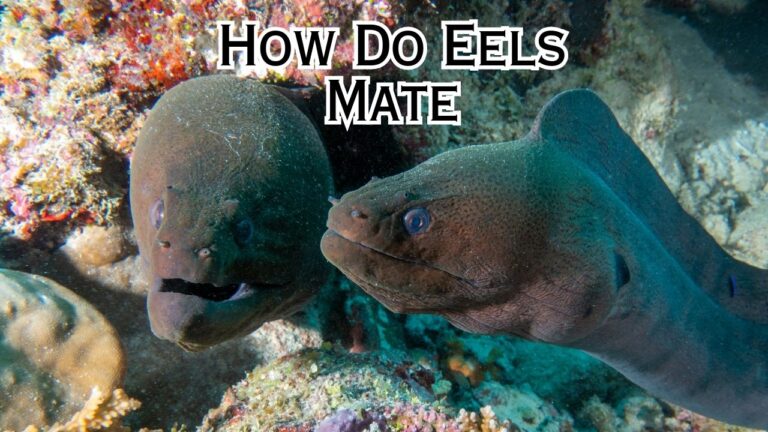
Wolf eels, scientifically known as Anarrhichthys ocellatus, are fascinating and unique creatures that inhabit the rocky coastal waters of the northeastern Pacific Ocean. Despite their name, they are not true eels but rather a species of fish known as “wolf fishes.” In this comprehensive guide, we will explore the world of wolf eels, including their physical characteristics, habitat, behavior, diet, reproduction, and their ecological importance.
1. Physical Characteristics
Wolf eels have a distinct appearance that sets them apart from other fish species. They have elongated bodies, reaching up to 2 meters (6.6 feet) in length, with large heads and strong jaws filled with sharp teeth. Their bodies are covered in thick, mucus-coated skin that is typically grayish-brown in color, often with patches of orange, yellow, or white. Despite their intimidating appearance, wolf eels are generally docile and pose no threat to humans.
2. Habitat and Distribution
Wolf eels are primarily found in the northeastern Pacific Ocean, ranging from the Gulf of Alaska to Baja California. They inhabit rocky reefs, kelp forests, and other subtidal habitats, preferring areas with caves, crevices, and rocky outcrops that provide them with shelter and protection. These habitats offer a diverse array of prey and suitable breeding sites for wolf eels.
3. Behavior and Adaptations
Wolf eels are known for their fascinating behaviors and unique adaptations. They are predominantly nocturnal, seeking refuge in rocky crevices and caves during the day and emerging at night to hunt for food. They possess excellent olfactory senses, which they use to locate prey and navigate their surroundings. Wolf eels are also known for their strong attachment to their chosen mating partner, forming monogamous pairs that may last for many years.
4. Diet and Feeding Habits
Wolf eels are carnivorous predators with a varied diet. Their strong jaws and teeth allow them to crush the shells of their prey, which predominantly consists of crustaceans such as crabs, clams, and shrimp. They may also feed on small fish, sea urchins, and other bottom-dwelling invertebrates. Wolf eels are opportunistic feeders, adapting their diet based on the availability of prey in their habitat.
5. Reproduction and Life Cycle
Reproduction in wolf eels is a fascinating process. Monogamous pairs engage in courtship rituals, including displaying vibrant colors, nest excavation, and circling behaviors. The female lays large clusters of eggs inside the nest, which the male guards and aerates until they hatch. After hatching, the larvae drift with the currents as part of their pelagic stage, undergoing metamorphosis before settling back to the rocky habitat as juveniles.
6. Ecological Importance and Conservation
Wolf eels play a significant ecological role in their habitat. They help control the populations of their prey species, contributing to the overall balance of the ecosystem. Additionally, their rocky reef habitats provide essential shelter and food sources for various other marine organisms. Despite their importance, wolf eels face certain conservation challenges, including habitat degradation and incidental catch in fishing gear. Efforts are being made to protect their habitats and implement sustainable fishing practices to ensure their long-term survival.
Conclusion
Wolf eels are captivating creatures that showcase the wonders of marine life in the northeastern Pacific Ocean. With their unique physical characteristics, interesting behaviors, and ecological significance, they are an integral part of the marine ecosystem. By understanding and appreciating these remarkable fish, we can foster conservation efforts and ensure the preservation of their habitats for future generations.
FAQs (Frequently Asked Questions)
- Are wolf eels dangerous to humans? No, wolf eels are generally not dangerous to humans. They are docile and prefer to retreat into their rocky crevices when approached.
- Can wolf eels be kept in home aquariums? While some enthusiasts have successfully kept wolf eels in large, well-maintained aquariums, they require specific conditions and expert care. It is essential to ensure that their habitat mimics their natural environment and provides ample space for their size and behaviors.
- Do wolf eels make sounds or vocalizations? Yes, wolf eels are known to produce vocalizations, which they use for communication and territorial displays. These sounds can range from grunts and growls to high-pitched whines.
- Are wolf eels an endangered species? Wolf eels are not currently considered endangered. However, localized declines in their populations have been observed in certain areas due to habitat degradation and overfishing. Monitoring and conservation efforts are important to ensure their continued abundance in their natural habitats.






